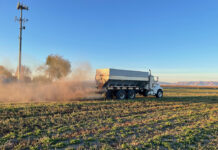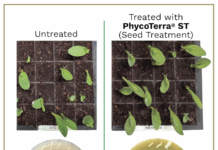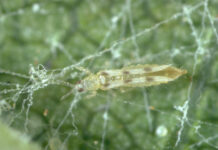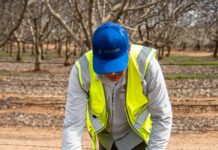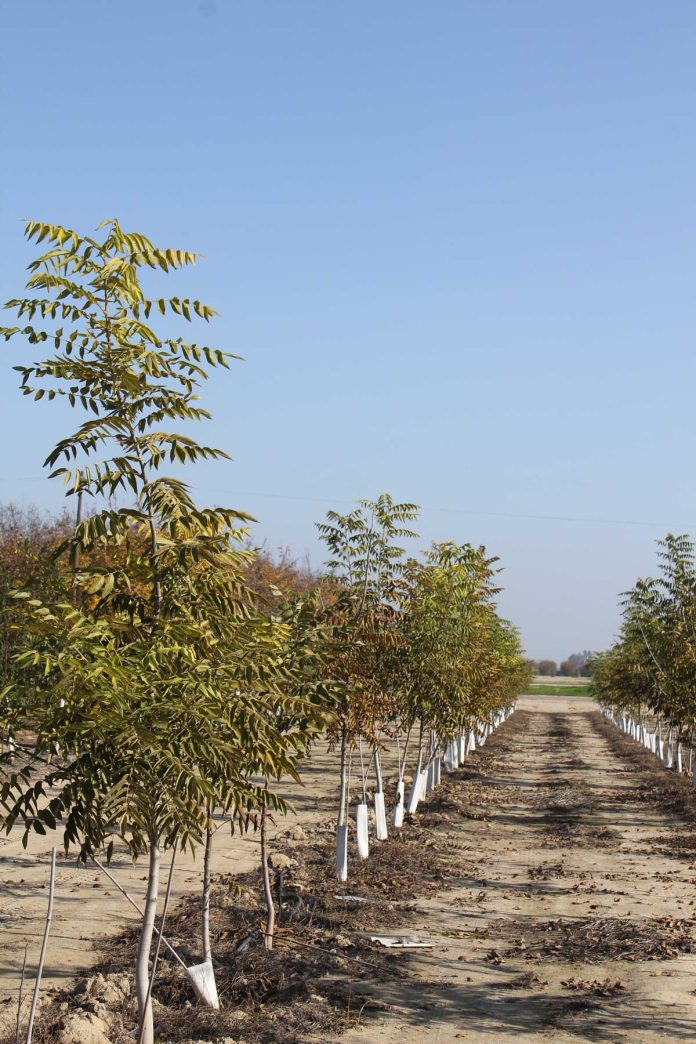
When growers think about nematodes, they often only think about plant parasites. These are only about 10% of nematode species known. They pose a threat to walnut production, but among those that do cause loss of growth, vigor and production in trees, the walnut root lesion nematode is the most damaging. Other nematode species, so-called free-living species, are very important in nutrient cycling. They feed on soil bacteria and fungi. There are other species as well.
Research into management of plant-parasitic nematodes with rootstock selection and chemical control at the UC Kearney site was presented by UC Riverside Nematologist Andreas Westphal during a recent field demonstration.
Westphal said that about 85% of California walnut orchards have some parasitic nematode infestations. When planning and preparing a new planting, prior soil samples can show nematode species and infestation levels to help decide if soil fumigation is necessary. Westphal noted that post-plant application tools are needed when orchards become re-infested. Westphal and other UC and USDA-ARS researchers actively pursue rootstock selection for tolerance and resistance to nematodes, crown gall and Phytophthora rots.
Root lesion nematode is tightly associated with plant growth disruption, Westphal said. Rootstock trials and chemical trials are continuing at Kearney to develop management strategies.
Significant findings in a California Walnut Board-funded trial show that post-plant applications of nematicides frequently require multiple years before plant yields improve. Some reductions of nematode numbers by post-plant applications can already reap some benefits, but in pre-plant soil treatments, efficacy needs to be even higher to protect new plantings. New plantings have to cope with transplant shock, and any additional stress has a likelihood to damage them severely. Pre-plant treatments can be more challenging due to the scarcity of highly efficacious material and the need for optimal soil conditions. If nematode infestations are confirmed in a field, such treatments are highly desirable for successful establishment of walnut orchards.
When it comes to rootstock tolerance and resistance to nematode infections, Westphal said that tolerance alone will not ensure productive trees long-term. The level of nematode reproduction in orchard soils can have an effect on the productive life of a walnut tree.
The determination of a rootstock’s tolerance to nematode infestation is ongoing at Kearney. Westphal noted that environment and drought stress are also components in the health and function of a rootstock. The trials are using different treatment to see how the rootstocks and the scions respond to these stresses.
“We are still looking for answers to how different genotypes respond to stress and nematode pressure,” Westphal said.
Soil samples, root sampling and even use of drones have been used to detect patterns of tolerance or resistance to nematode pressure over time. Finding a balance between rootstock and the scion is important.
Trials used both pre-plant and post-plant fumigants as well as anaerobic soil disinfestation to manage nematode levels. However, Westphal noted that there is much adjustment work to do with chemical control. Root lesion nematode levels can build again over time, and researchers need to find the combination that will protect trees.
If nematodes are in a field, they are there to stay, growers need to manage them over time. Methods are being developed at Kearney to enrich growers’ tool cabinets to deal with these challenges.



